Diamond Carat Size Chart
In Modern English, we get the word "carat" from the Arabic word, "qīrāṭ," and ultimately from Ancient Greek "keration," the word for a carob seed. Ancient people used carob seeds to weigh gold and precious metals thanks to the extreme uniformity of the size and weight of carob seeds.
Today, we may have moved to digital scales and the metric system, but carats still remain as a useful customary shorthand for measuring the size and weight of diamonds. But while people can immediately grasp the relative size of a one-carat diamond compared to a two-carat stone, there's quite a bit of flexibility that goes into understanding the world of diamond carats.
Here, we'll be discussing our favorite fiery stone and the diamond carat size chart we use to talk about them:
The standard carat measurement goes from 0.25 carats to 5 carats (which is where our diamond carat size chart begins and ends), with diamonds outside of this range representing extremes that are usually unavailable in ordinary marketplaces. 1 carat is equivalent to 0.2 grams, so 5 carats is 1 gram. That may not seem like a lot, but a 5-carat round-cut diamond has a diameter of 11 millimeters-or roughly half an inch. For a size 7 or 8 finger, that's nearly the diameter of the whole finger!
The complicating factor in this situation is that carat weight may be the same for every cut of diamond, but not every cut has the same volume for the same weight. A good way to think about this is that equal amounts of steam and water may have the same weight, but they will take up vastly different amounts of space.
Three common cuts of diamond are either circles or equal on all sides (princess cut, round cut, and asscher cut), and the rest of the common cuts (emerald, marquise, oval, radiant, pear, heart, and cushion cuts) are longer on one side than the other. The effect of this to make the dimensions of diamonds of the same carat very different, and the necessity of a diamond size carat chart:
You can read the chart by finding the cut of your stone on the left and the carat along the top axis. You'll find the dimensions of your selected diamond where the two pieces of information meet. The rule of thumb is that because they are so long, emerald, marquise, and pear-cut diamonds are good choices for elongating the look of a finger; more compact diamonds, such as the princess cut, will stand out more on an already narrow ring finger.
Carat Weight:

Round
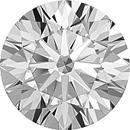
4.1mm

5.1mm

5.8mm

6.4mm

7.4mm

8.1mm

9.3mm

10.2mm

11mm

Princess
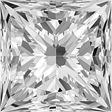
3.5 mm

4.4 mm

5 mm

5.5 mm

6.4 mm

7 mm

8 mm

9 mm

9.5 mm

Emerald
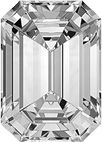
4.5x3 mm

5.5x4 mm

6x4.5 mm

6.5x5 mm

7.5x5.5 mm

8.5x6 mm

9.5x7 mm

10.5x7.5 mm

11.5x8.5 mm

Asscher
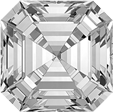
3.7 mm

4.4 mm

5 mm

5.5 mm

6.4 mm

7 mm

8.1 mm

9 mm

9.6 mm

Marquise

6.5x3 mm

8.5x4 mm

9.5x4.5 mm

10.5x5 mm

12x6 mm

13x6.5 mm

14x7 mm

16x8 mm

17x8.5 mm

Oval
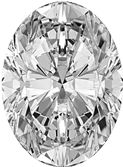
5x3 mm

6x4 mm

7.5x5 mm

8x5.5 mm

9x6 mm

10.5x7 mm

11.5x7.5 mm

13x8.5 mm

14x9.5 mm

Radiant
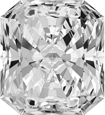
3.5x3 mm

5x4.5 mm

5.5x5 mm

6x5.5 mm

7x6 mm

7.5x7 mm

8.5x7.5 mm

9.5x8.5 mm

10x9 mm

Pear
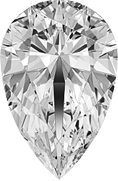
5.5x3.5 mm

7x4.5 mm

8x5 mm

8.5x5.5 mm

10x6.5 mm

10.5x7 mm

12.5x8 mm

13.5x9 mm

15x10 mm

Heart
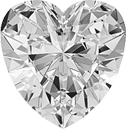
4.2 mm

5.4 mm

6.0 mm

6.7 mm

7.6 mm

8.3 mm

9.5 mm

10.3 mm

11 mm

Cushion
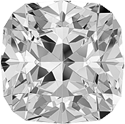
4x3.5 mm

5x4.5 mm

6x5 mm

6.5x5.5 mm

7.5x6.5 mm

8x7 mm

9x8 mm

10x8.5 mm

10.5x9 mm
Diamonds are usually cut to meet certain round numbers: 0.25 carats, 0.5, 0.75, 1, 2, et cetera. It may interest you to know what while diamonds are usually found in these weights, there are diamonds that don't quite reach or are slightly over a given number. These diamonds cost significantly less than diamonds that exactly hit the number. And because carat weight is distributed equally across the entire stone, a difference of millimeters is practically unnoticeable by the human eye.
However, if you know that you're going to pick a diamond that has a particular millimeter size, be sure to know the exact dimensions that the ring can hold. Nobody needs to have a dazzling engagement ring whose center stone is jiggling around in the prongs! Also, keep in mind that if a certain carat weight isn't going to fit in a given setting, you're not locked into either choice. Thanks to the wide variety of settings and cuts of diamond, you may be able to find a cut of diamond that looks similar to your original choice, or you may be able to find a setting that is better qualified to hold your chosen diamond (for instance, there's a surprisingly large difference in what a four-prong and six-prong setting can hold despite their similar look).
Despite being one of the 4 C's (color, cut, clarity, and carat), carat is a surprisingly unimportant quality in a diamond relative to the other three. It's important to remember that carat doesn't equal sparkle! A poorly cut 3-carat diamond will sparkle far less than a perfectly cut 1-carat diamond. The better the cut of a diamond, the more light will be refracted out of the top of the "table," or flat top, of the stone.
Also, a large stone that has many imperfections and inclusions will show up more clearly than a small stone, which defeats the purpose of purchasing a larger diamond in the first place. Here at Torosi, we can't stress enough that if you have to make a choice between quality and quantity, the decision should be obvious!
Having fielded this question in the past, it's important to remember that colored diamonds are also graded by carat and have comparable dimensions to their white diamond counterparts on the diamond carat size chart. However, the 4 C's affect a colored diamond significantly different than a white diamond. For example, clarity may be less important in a deeply colored stone, because the color obscures any inclusions or flaws in the crystal. When it comes to carat, a bigger weight may show off more of the vivid color in your diamond-but the choice will depend wholly on your tastes.
Do keep in mind that carat size also affects price. The relationship between price and weight is not linear, but rather the price increases exponentially for every additional carat. This is primarily because larger diamonds that are gemstone quality are progressively harder to find in nature.
Choosing the right carat weight of diamond depends very much on your personal tastes, the cut of the diamond, your budget, and the setting that you want for your jewelry. Refer to our handy chart, as well as our other education pages, to find out more, and begin your diamond adventure at our Loose Diamonds page to find the right laboratory-certified diamond for you!
If you'd like to know more about diamonds, the 4 C's of picking quality diamonds, or our diamond carat size chart, don't hesitate to contact us today at (888) 224-1556 to speak to one of our diamond professions, or email us at customerservice@torosi.com.




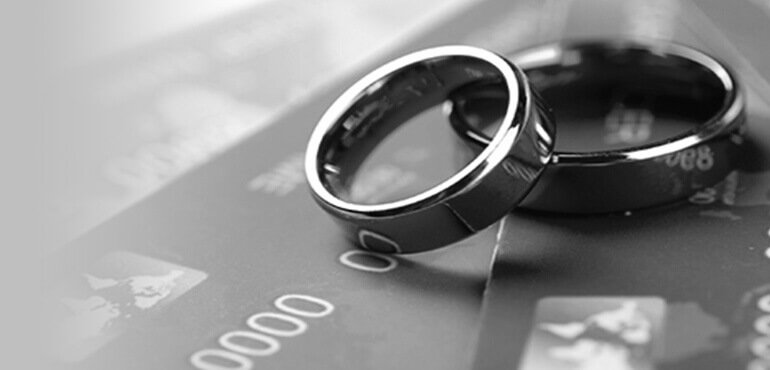

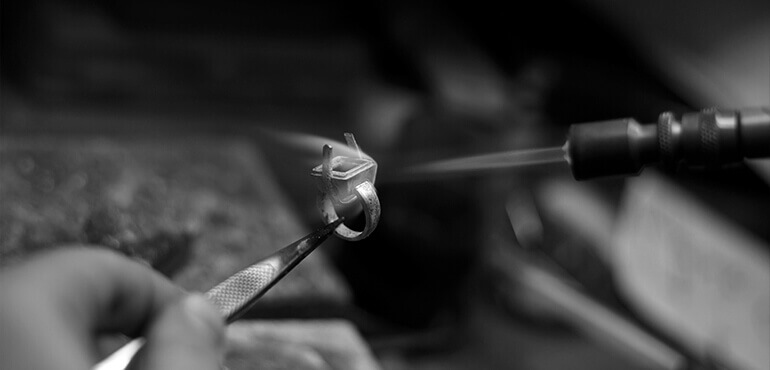
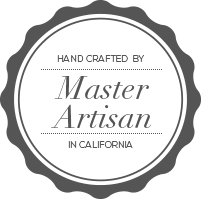

 Three Stone Rings
Three Stone Rings Side Stone Rings
Side Stone Rings Halo Rings
Halo Rings Vintage Rings
Vintage Rings Solitaire Rings
Solitaire Rings Yellow Gold Rings
Yellow Gold Rings White Gold Rings
White Gold Rings Pave Rings
Pave Rings Channel Rings
Channel Rings Simple Rings
Simple Rings Round Rings
Round Rings Princess Rings
Princess Rings Cushion Rings
Cushion Rings Emerald Rings
Emerald Rings Asscher Rings
Asscher Rings Radiant Rings
Radiant Rings Oval Rings
Oval Rings Pear Rings
Pear Rings Marquise Rings
Marquise Rings Heart Rings
Heart Rings 14k White Gold
14k White Gold 14k Yellow Gold
14k Yellow Gold 18k White Gold
18k White Gold 18k Yellow Gold
18k Yellow Gold Platinum
Platinum Channel Bands
Channel Bands Pave Bands
Pave Bands Prong Bands
Prong Bands Eternity Bands
Eternity Bands Diamond Bands
Diamond Bands
